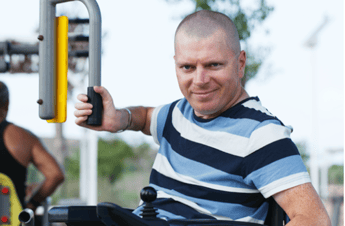I want to start this blog by saying that I am a Ph.D., not an M.D., so please consult your doctor before starting any new exercise program. That being said, I wanted to write today about a relatively recent trend in preparation for many invasive surgeries and how it might relate to the current COVID-19 pandemic.
While so many in the US and throughout the world are under aggressive social distancing and “stay at home” advisories, it’s easy to overlook physical activity as a priority. Yet, we all know the multitude of studies showing that physical activity is important for our cardiovascular and psychological health. What you may not know is that increasingly, preoperative exercise-based intervention, or prehabilitation, has been explored to improve outcomes after scheduled surgery. The premise is relatively simple: get the heart and lungs in better shape, and they’ll be more likely to withstand a stressor, such as invasive surgery.
While the exact prehabilitation protocol differs between studies, it usually entails 2-6 weeks of aerobic (endurance training or high-intensity interval training) and resistance exercises, and appears effective at improving long term outcomes for patients undergoing lung surgery (Liu et al 2019), cardiac or abdominal surgery (reviewed in Valkenet et al 2010), lung cancer surgery (Boujibar et al 2018), and others. Admittedly, many studies are small (several dozen participants) or poorly controlled, and too heterogeneous – employing different interventions and outcome measurements – to make meta-analysis meaningful. But the majority of studies find improvement in postoperative pain and physical function, or a reduction of complication incidence, with a really low overall adverse event rate (0.5%; Santa Mina et al 2014). The potential benefits appear to greatly outweigh the risks. Recent studies also suggest prehabilitation might be most useful in high-risk or less fit subjects (e.g., see Barberan-Garcia et al 2018).
By now you may be asking what this has to do with the current pandemic, and how this relates to SCI. Individuals living with SCI that have suppressed immune systems or have decreased respiratory ability may be at higher risk for complications related to COVID-19. Because the SARS-CoV-2 coronavirus may result in a life-threatening respiratory infection, a growing number of scientists and clinicians are recommending prehabilitation to precondition the respiratory and cardiovascular systems, potentially improving our ability to physically and psychologically weather an infection and any resulting complications. And regardless of your individual risk factors, exercise is important for general cardiovascular fitness for those living with SCI. While some of our fitness options are limited due to social distancing, many are still possible from the comfort of your own home or outside in an appropriate manner.
There are many things we can’t control in this pandemic, but here’s one thing you have complete control over. Studies show you can improve your cardio-respiratory shape in as little as four weeks, so get going!
For more resources on the coronavirus, visit the Reeve Foundation COVID-19 Information Center.

